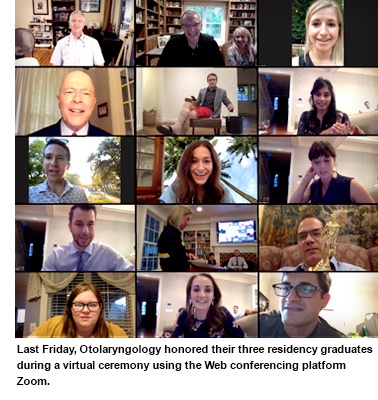Welcome to Our New Normal
Good morning!
As we settle into summer, we also seem to be settling into something like a new normal at the Medical Center’s main campus and our other locations in the metro area and across the state.
The novel coronavirus is still very active in Mississippi. If you are following the health department statistics, we are still seeing high numbers of case counts most days. Eventually, some percentage of those cases will convert to hospitalizations, and Mississippi is one of a dozen or so states in which hospitalizations continue to rise. So much for the hope we had in February and March that the virus would be seasonal and fade into the background over the summer.
 Unfortunately, when I’m off campus, I do not see a whole lot of compliance with measures to prevent community spread – social distancing and mask-wearing being the most obvious examples. I don’t know whether people are making a political statement, they just don’t care or they’re not acquainted with the germ theory of disease, but I wish they would be more careful.
Unfortunately, when I’m off campus, I do not see a whole lot of compliance with measures to prevent community spread – social distancing and mask-wearing being the most obvious examples. I don’t know whether people are making a political statement, they just don’t care or they’re not acquainted with the germ theory of disease, but I wish they would be more careful.
On the other hand, as I walk across the Medical Center, I see that our employees clearly get it. It’s unusual to see somebody without a mask, especially indoors. And from what I hear and see, most people are being very conscientious about distancing, mask-wearing and practicing good hand hygiene.
And that brings me to what I wanted to share today. During the last three months, we’ve graduated from the acute phase of the pandemic, where we were operating in crisis mode and literally inventing things as we went along, to the transition of restarting our non-COVID clinical services and bringing 2,000 teleworkers back to campus. And now we are “back in business,” so to speak, often finding new, creative ways to get the job done. Through all of this, you have shown remarkable patience, adaptability and commitment.
Thank you.
There are so many examples of what I’m talking about. I think about the Acute Respiratory Clinic, which is essentially the “front door” for testing suspected adult COVID-19 patients. The clinic has moved a few times, but our providers, even with completely redefined and tedious processes and protective gear, are caring for these patients safely, efficiently and with compassion. A similar clinic for Children’s patients operates adjacent to the pediatric ED.
And then there is our Obstetrics and Gynecology team, which has also developed and implemented new procedures for managing COVID-19-positive obstetrical patients and shared these with their ob-gyn colleagues throughout the state. Pandemic or no pandemic, childbirth marches on, and the heroes on this team, working in close collaboration with others, have managed 48 COVID-19-positive obstetrical patients during this period.
The use of videoconferencing platforms like WebEx and Zoom have almost become second nature. For large meetings, like the regular COVID-19 updates we’ve been having, they allow many more people to call in and participate, which then enables the physical attendees to space themselves out. (And we have been so indebted to DIS for their hustle in getting us all meeting online and facilitating temporary teleworking.)
Like almost everybody else, we’ve talked about doing more videoconferencing for years, but have never fully embraced it. No more. Now, for example, our Alumni Affairs staff are conducting alumni board meetings via videoconference and our research faculty are hosting virtual meetings for NIH grant reviews. Our education mission has embraced using teleconferencing for recruiting purposes. And we’ve done our first – and hopefully our last – graduation ceremonies via videoconference. Even though in-person meetings and conferences will always have their place, I think we have adapted well to videoconferencing and it’s hard to imagine us not continuing to use this modality as a primary communications tool in the future.
The same could be said for telemedicine. Since the cancellation or postponement of most outpatient appointments in March, telehealth use has soared, with 10 times as many virtual visits in April than in February through the UMMC2You platform. And we’ve had tons of positive feedback from patients and providers about how convenient these visits are. This transition didn’t just happen; many of our providers had not used this platform and required training through the Center for Telehealth early during the pandemic.
Responding to the pandemic has also compelled us to reevaluate curriculum content delivery and ask what material is better presented online. Conversely, we have also reevaluated some of what we have traditionally presented via the Web that might be better suited for a face-to-face small group. In an environment that was already being fundamentally disrupted by digital technology, the pandemic has required us to put everything on the table and rethink the best ways to teach and learn.
I could go on, but I think you get my meaning. Our faculty, staff and students are finding new and creative ways to get the job done in all the many facets that comprise UMMC. I can’t tell you how much I appreciate your tenacity and commitment. This is what it looks like to be #UMMCStrong.



